The Shri Varaha Lakshmi Narasimha temple is a Hindu temple situated on the Simhachalam hill, which is 500 metres above the sea level in Visakhapatnam, Andhra Pradesh. It is dedicated to one of the Hindu trinity deities Vishnu, who is worshipped there as Varaha Narasimha.
As per the temple’s legend, Vishnu manifested in this peculiar form, with a boar head, human torso and a lion’s tail, after saving his devotee Prahlada from a murder attempt by the latter’s father Hiranyakashipu. Except on Akshaya Tritiya, the idol of Varaha Narasimha is covered with sandalwood paste throughout the year, which makes it resemble a Shiva Lingam.
The temple is situated on a hill 800 metres (2,600 ft) above the sea level at a distance of ten miles to the north of Visakhapatnam. The hill range is a part of the Eastern Ghats and is named Kailasa. The architecture of this temple is a mixture of the styles of the Odishan Kalinga architecture, Chalukyas and the Cholas. The temple faces west instead of east, signifying victory.
There are two temple tanks Swami Pushkarini near the temple and Gangadhara at the bottom of the hill the religious practices and customs of the temple are followed according to Pancharatra Agama.
The Sthala Purana (local legend) of Simhachalam consists of 32 chapters. Once, the Four Kumaras visited Lord Vishnu’s abode Vaikuntha as children. Jaya-Vijaya, the demigod gatekeepers of Vaikuntha, failed to recognise them and denied their entry. In resentment, they cursed the duo stating that they would have to give up divinity, born and live the lives of mortal beings on earth. Vishnu failed to revoke the curse of the Kumaras and felt sorry. He later offered two solutions: either being Vishnu’s devotees in seven human lives or his enemies in three demonic lives. Jaya-Vijaya could not bear separation with Vishnu for a long time and chose the second possibility.
In their first demonic lives, Jaya-Vijaya were born as Hiranyakashipu and Hiranyaksha to sage Kashyapa and Diti in an inauspicious time during sunset. To tease lord Brahma and other gods, Hiranyaksha ensured that earth loses its vitality and sinks into the rasatala, the lowest level in the cosmic universe. Vishnu assumed the form of a boar referred to as Varaha and restored the earth to its normal position. Varaha later killed Hiranyaksha in a war that lasted for a thousand years.
Hiranyakashipu vowed to seek revenge and prayed to Brahma. He gained a boon which made him invulnerable to death either by day or night, either in the morning or the night, and either by a human or a beast.
When the gods headed by Brahma visited Vaikuntham to tell an account of the happenings to Vishnu, a guardian named Sumukha obstructed them. They manage to meet Vishnu and also convey the misbehaviour of Sumukha. Vishnu assured that Hiranyakashipu shall be killed and Sumukha would be the serving cause. Sumukha pleaded for a pardon but Vishnu denied, saying that an offence against his devotees is inexcusable. As per Vishnu’s orders, Sumukha was born as Hiranyakashipu’s son Prahlada.
Prahlada displayed staunch devotion towards Vishnu in his childhood. As a result, he had to face many death trails.
After many unsuccessful attempts to kill Sri Prahlada, Hiranyakashipu orders, as a last resort, to hurl Sri Prahlada into the sea and place a huge mountain over him. The servants chose to do this at Simhachalam. But before they could finish, Narayana rescued Prahlada by jumping over the hill and lifting him from the sea.
Simhachalam, therefore, is the place where the Lord rescued Prahlada. It is also said that since the Lord jumped at once to rescue Prahlada, the Lord’s lotus feet went into Patala. The local Sthala Purana says that the Darshana of Lord’s lotus feet is available only to inhabitants of Patala Loka.
At Prahlada’s request, the Lord then assumed the form of the Varaha-Narasimha Deity, so that Prahlada could see both aspects of the Lord the one by which He had already killed Hiranyaksha and the one by which He would soon kill Hiranyakashipu.
After the death of Hiranyakashipu, Prahlada built a temple around the Deity. It is said that after Prahlada handed over the kingdom to his son, he worshipped the deity personally. However, at the end of Satya Yuga, owing to neglect perhaps, a huge anthill gathered around the Deity. But at the beginning of another yuga, the Deity was rediscovered by Pururava, the king of the lunar dynasty, who is mentioned in the Ninth Canto of the Srimad-Bhagavatam.
Riding with his wife, Urvashi, in an aerial chariot over the hills of the South, Pururava was drawn by a mysterious power to Simhachalam. Some say that Narasimhadeva had appeared in Pururava’s dream and then he went to Simhachalam and he discovered the deity in a Garden of Malati trees.
Nonetheless, he discovered the Deity and cleared the earth around Him. Pururava then heard a voice from the sky which told him to cover the Deity with sandal paste, worship the Lord in this form, and expose Him only once a year, on the day of Chandana-yatra. Following this instruction, Pururava covered the Deity with sandal pulp equal to the earth he had removed, worshipped the Deity, and rebuilt the temple, which has flourished ever since.
The present temple was built in the 9th or the 10th century and was extensively rebuilt in the 13th century. There are 525 inscriptions in this temple, and the earlier one dates back to 1087 A.D. An inscription dated as far back as 1098 AD of the Chola King Kuloththunga provides some clue as to its antiquity. Another inscription shows a Queen of the Eastern Ganga of Kalinga (ancient Orissa) (1137-56 AD) covering the image with gold while a third inscription says the eastern Ganga King of Orissa, Narasimha Deva, built the main/central shrine in 1267 A.D.
In the 11th century AD, after winning a debate at the Puri Jagannath temple, Vaishnavite saint and philosopher Ramanuja visited this temple. Those days, Simhachalam’s deity was believed to be Shiva due to some reasons. The notable ones were the unusual position of the deity’s idol, the gate at the lower terrain named Bhairava Dwaram, and the second temple tank being referred to with the name Gangadhara.
The annual celebration of Kamadahana, a tradition usually observed in Shiva’s temples, was practised here which added strength to the beliefs.
Ramanuja argued that the idol of Varaha Narasimha is in a posture in accordance with the Pancharatra Agama rules. He added that Kamadahana is celebrated here for the temple’s purification as per the Sishtachara traditions. Ramanuja pointed out that Shiva’s manifestation Bhairava is neither the guardian of the Bhairava Dwaram nor worshipped as one. Ramanuja was able to defeat the scholars at Simhachalam and converted it into a Vaishnavite temple.
Varaha Narasimha’s idol, when covered with sandalwood paste, resembles a Shiva Lingam. Ramanuja took personal possession of the temple and ordered the priests to remove the paste. The conversion work began and before completion, the idol started bleeding. Feeling the deity’s anger for violating the rule, sandalwood paste was applied again which stopped the bloodstream. They presumed that the deity wished to look like a Lingam and continued the tradition except for one day.
Sri Krishna Deva Raya after defeating the Gajapati ruler of Orissa Gajapati Pratapa rudra Dev visited the shrine twice in 1516 AD and 1519 AD and offered numerous villages for maintenance of worship along with valuable jewellery of which an emerald necklace is still in the temple.
Shiva’s manifestation Tripurantaka is the kshetrapala (guardian deity) of Simhachalam. The guardian deity is identified with Bhairava, a fierce manifestation of Bhairava. Tripurantaka and his consort have a temple dedicated to them which is located on the way to gangadhara. It is one of the oldest South Indian temples dedicated to this deity. Bhairava was believed to be more fierce than Narasimha.
Simhachalam temple resembles a fortress from outside with three outer courtyards and five gateways. Near the entrance, the footprints of Hindu saint Chaitanya Mahaprabhu installed by Bhaktisiddhanta Sarasvati in the year 1930 can be seen.
In the Mukha mandapa (main hall), there is a pillar named Kappam Stambham which is believed to have curative powers. It is consecrated using the Santana Venugopalaswamy Yantra and is known to grant unfulfilled wishes.
The moolavar of Varaha Narasimha is kept in a separate hall named Prahlada mandapa. In its original form, the idol of Varaha Narasimha is two and a half feet tall. The deity stands in a tribhanga posture with a boar’s head, a human torso and a lion’s tail. On either side of the deity, the idols of Sridevi and Bhudevi holding lotus flowers are seen. The sculpture of Varaha Narasimha has no ornaments and drapery carved on the body. The moolavar is covered with sandalwood paste imported from Srivilliputhur, Tamil Nadu.
After application of the sandalwood paste, the moolavar resembles a four feet tall Shiva Lingam. There is enough space for the devotees to offer pradakshinas (circumambulations) to the deity inside the Prahlada mandapa. There are only four main ornaments used in the temple: a Thirunamam made of diamonds and rubies, a chain of emeralds, a 100-tola gold bracelet, and a golden crown.
Simhachalam temple found many literary references and lyrical works dedicated by anonymous writers; some of the latter are preserved in the Government Oriental Manuscripts Library, Chennai. The earliest known literary mention of the temple is found in Lakshmi Narasimhapurana written by Telugu poet Yerrapragada. Krishnamacharyulu wrote devotional vachanas (prose) in praise of Varaha Narasimha of Simhachalam. Krishnadevaraya mentioned his visit to Simhachalam in his epic poem Amuktamalyada. The king’s visit was also documented by poets Allasani Peddana and Dhurjati in Manucharitra and Krishnaraya Vijaya respectively.
Chandanotsava (sandalwood festival), also known as Chandan Yatra, is the most important festival celebrated in the temple. It is celebrated on the festival day of Akshaya Tritiya (April – May) in accordance to the temple’s legend. On this day, the Sandalwood paste, commonly referred to as Chandanam, covering the moolavar throughout the year is removed. As a result, devotees can see the original form of the deity’s idol for 12 hours once in the whole year.
Kamadahana is another significant festival which occurs on the full moon day in the month of Phalguna. It is considered as an auxiliary festival which not specified by ancient texts of the temple. Followers of Sri Vaishnavism consider Kamadahana as a self-purification ceremony.

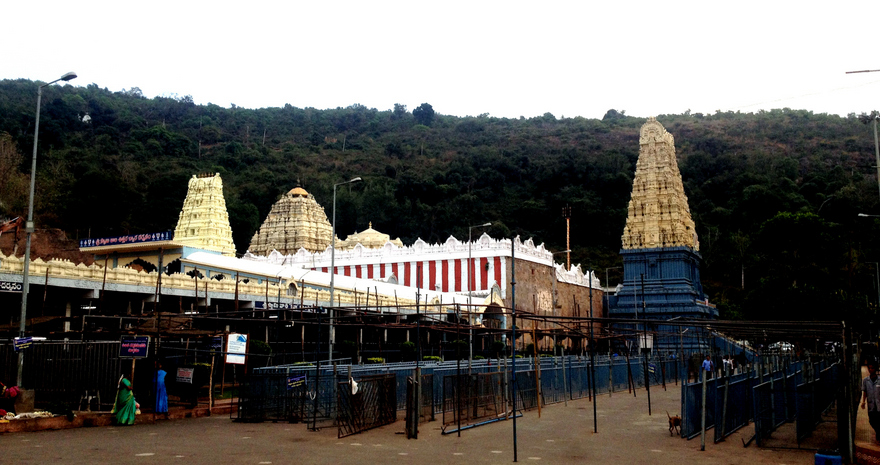
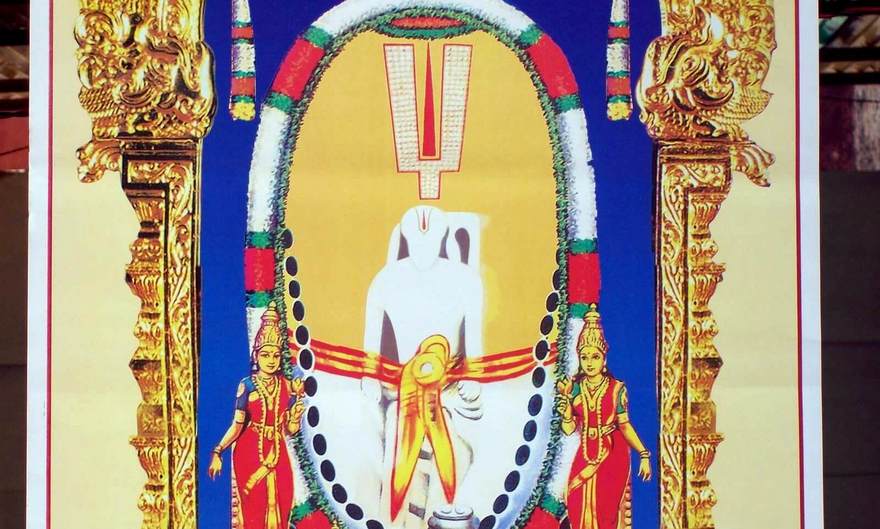
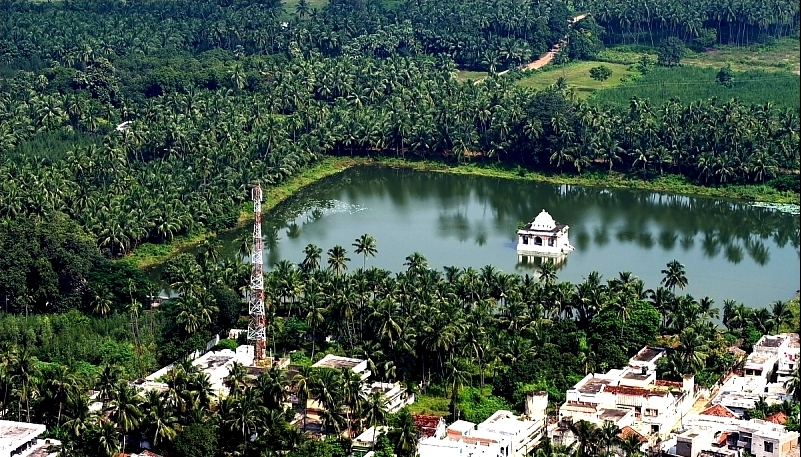
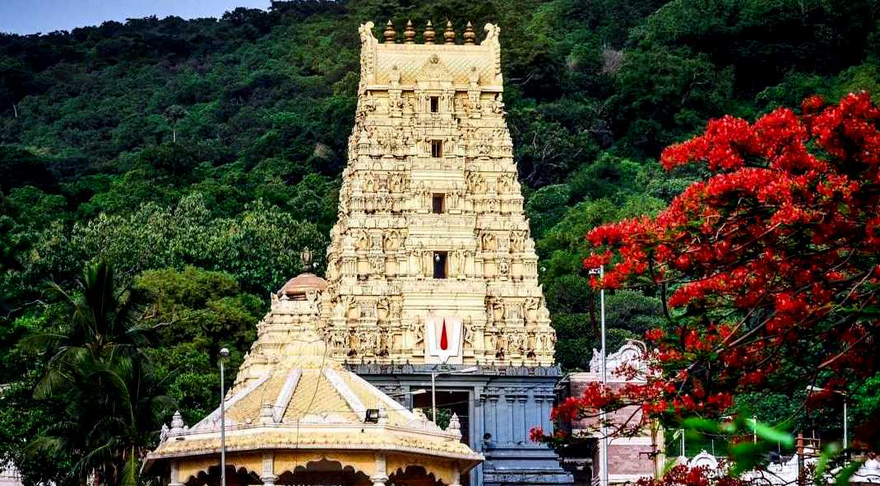
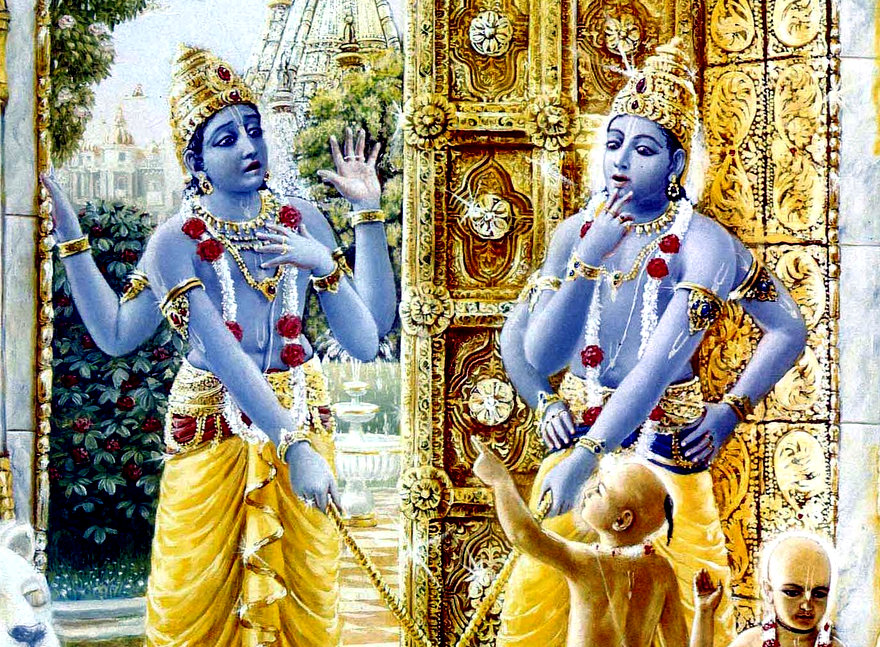
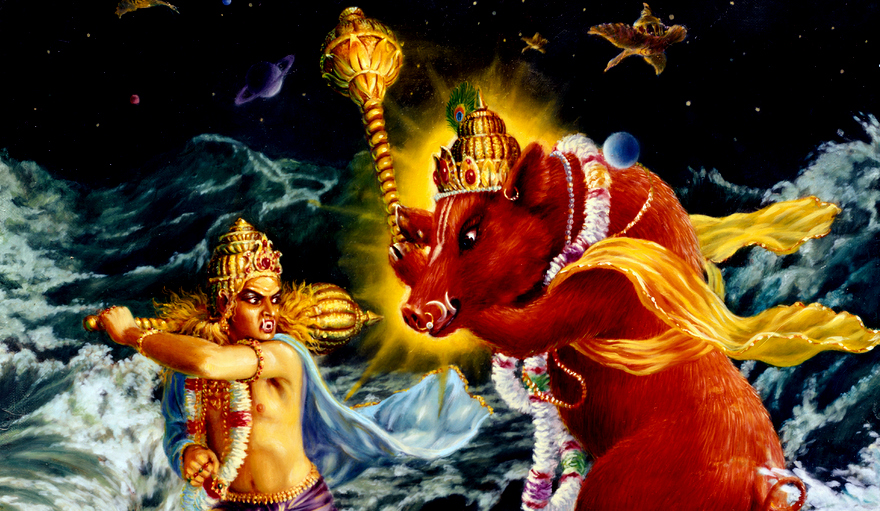
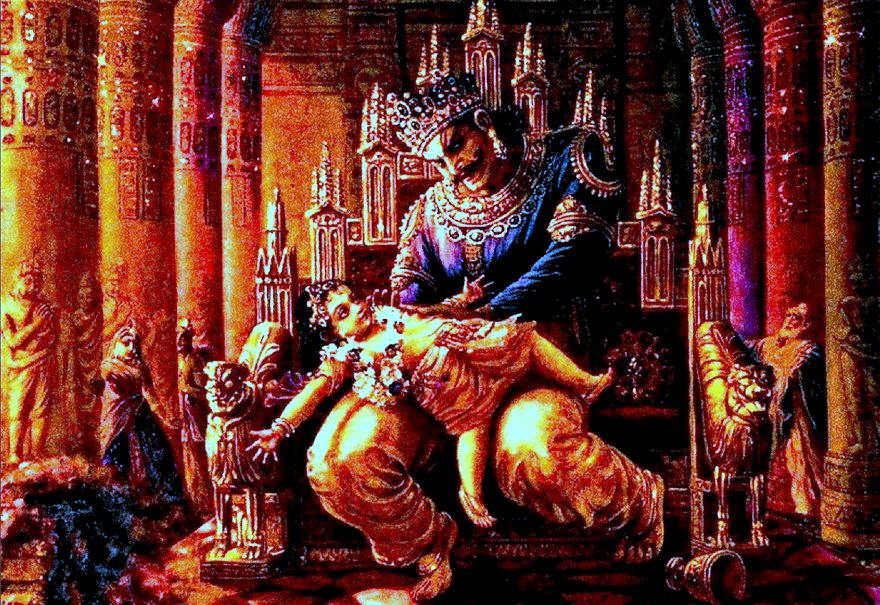
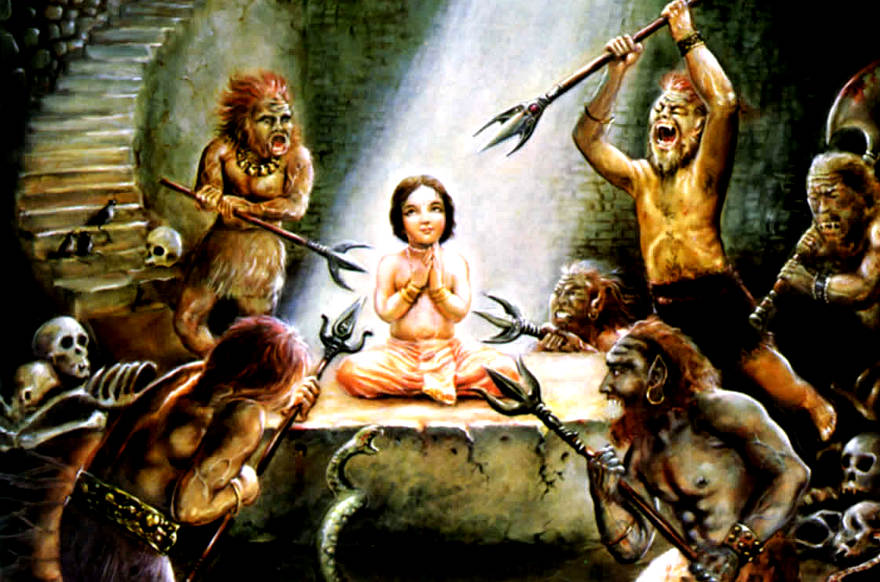
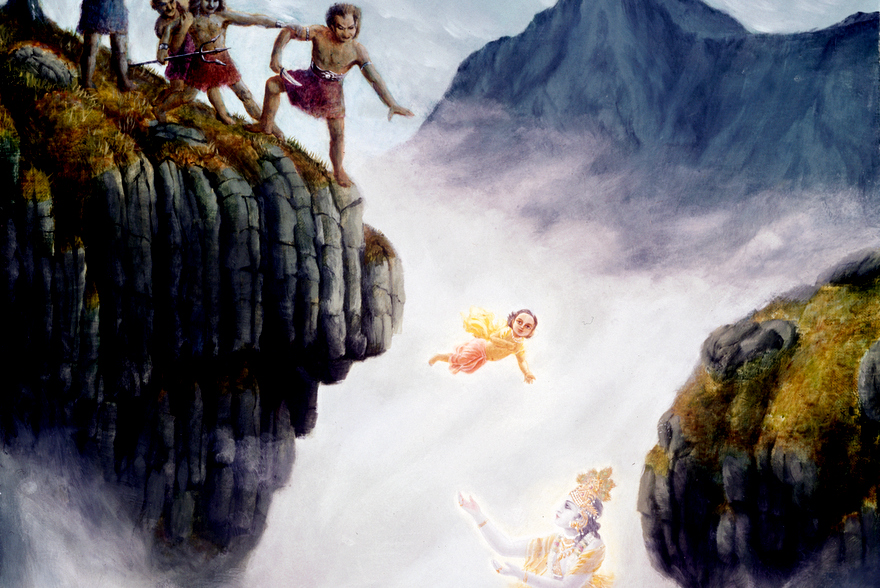
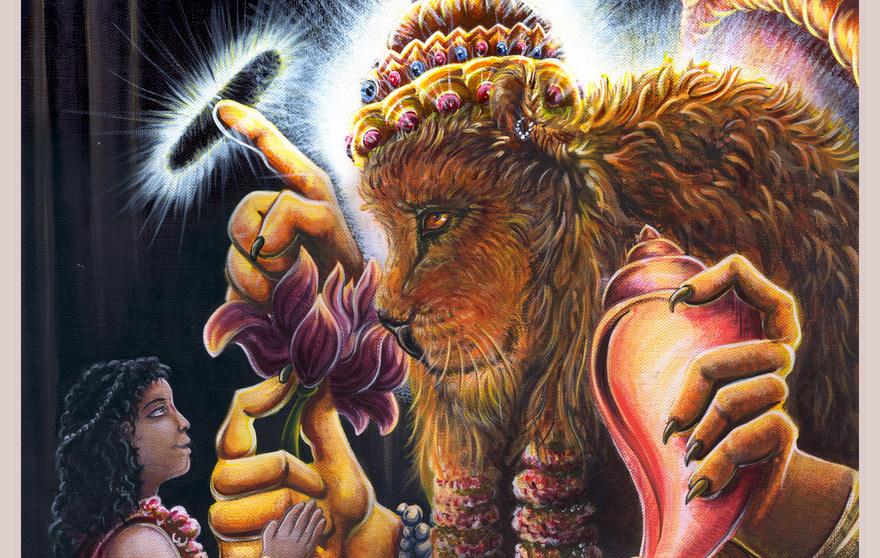
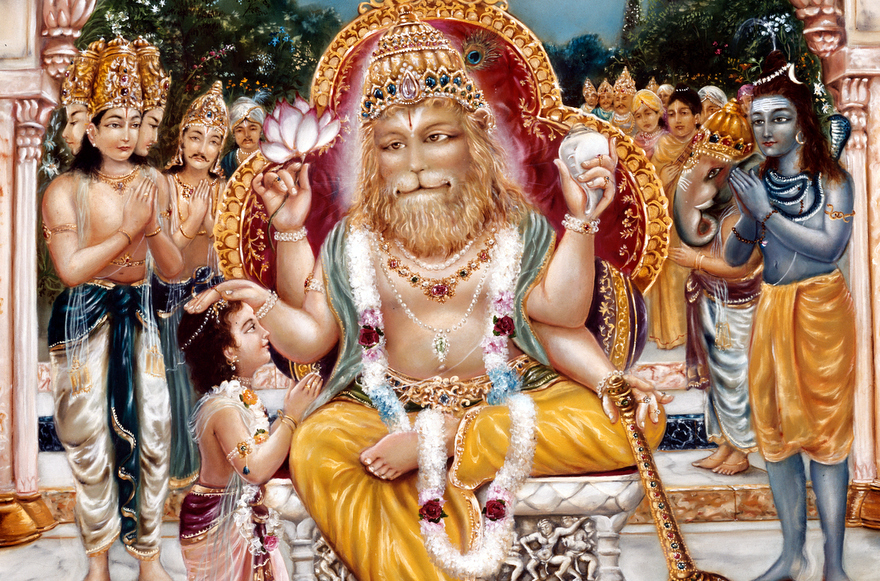
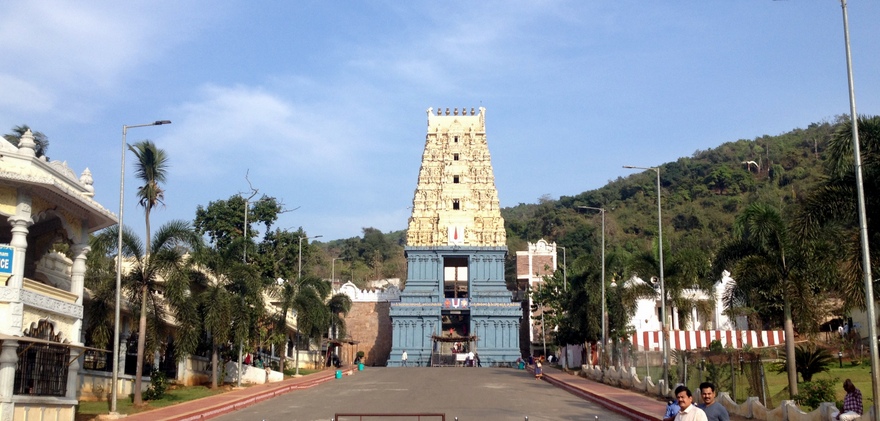

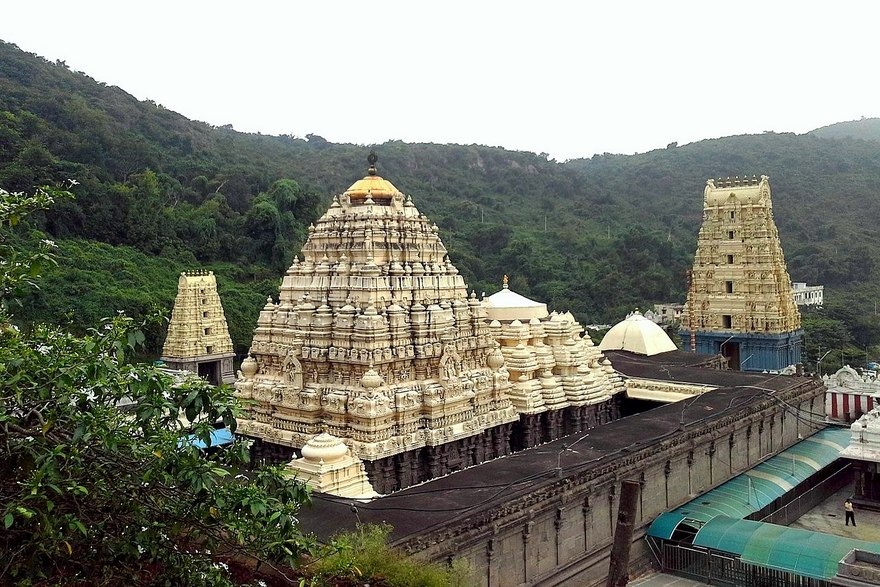
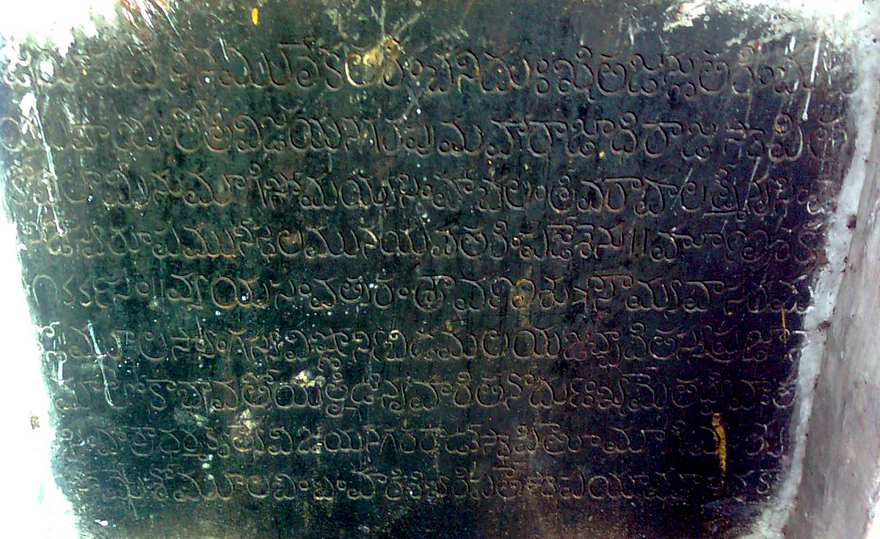
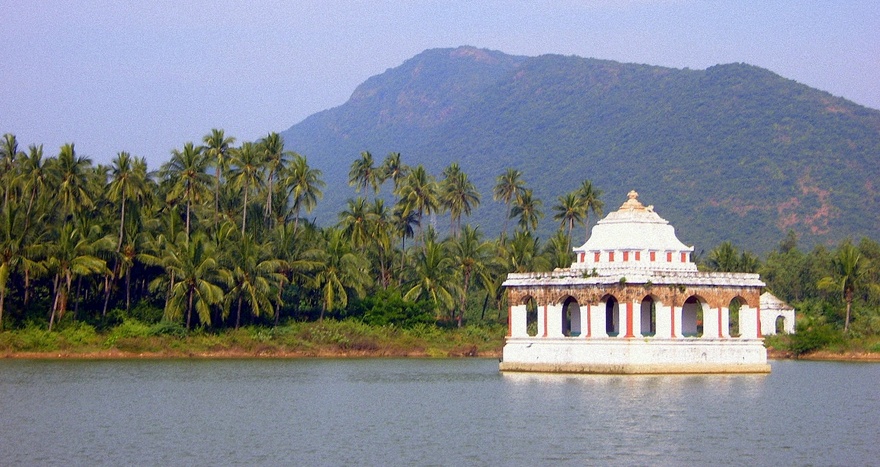
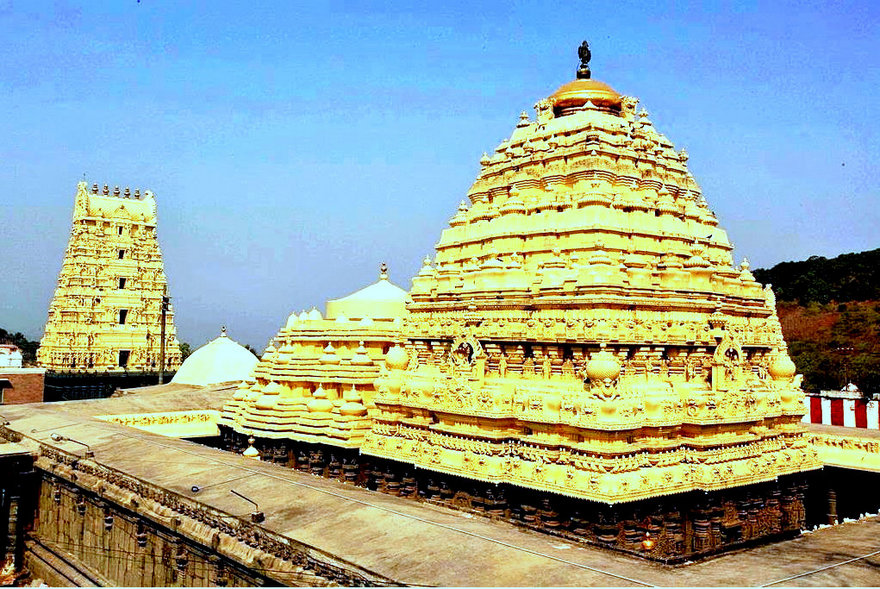
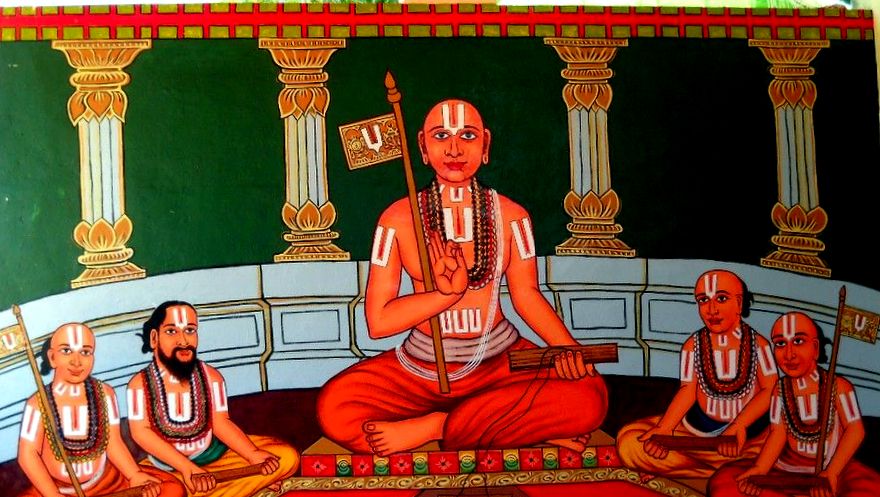
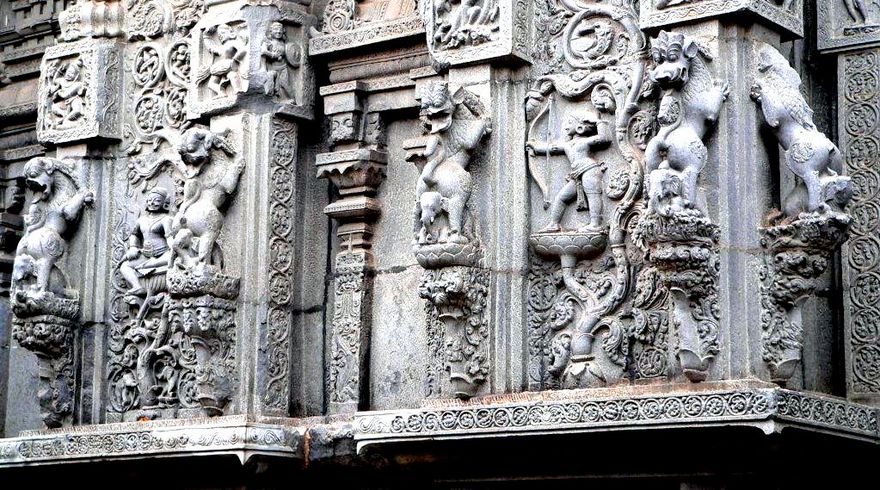
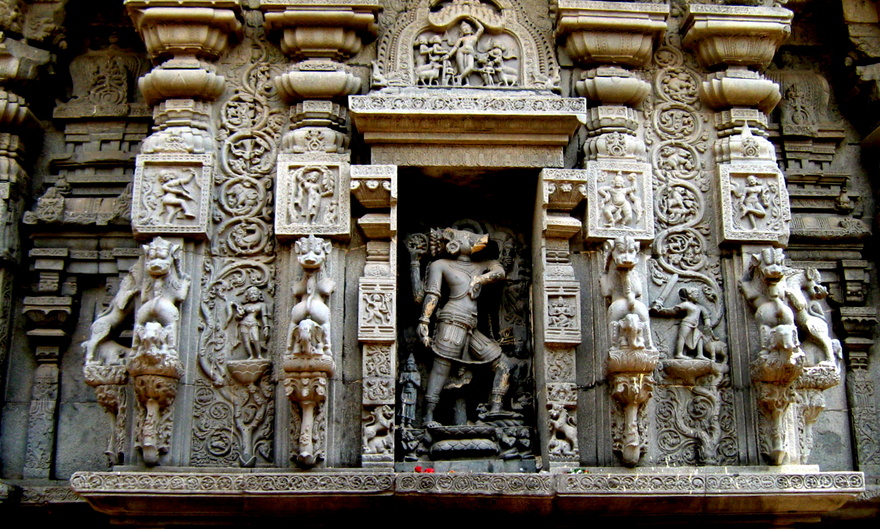

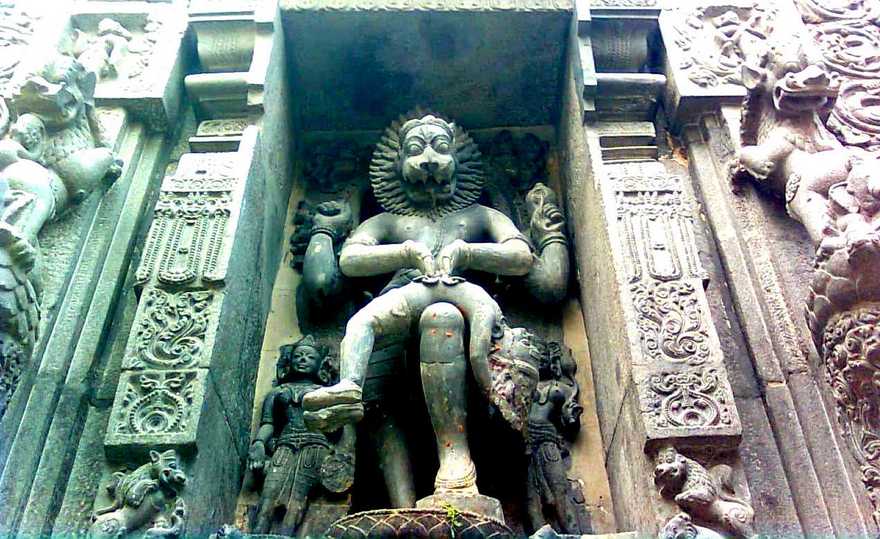
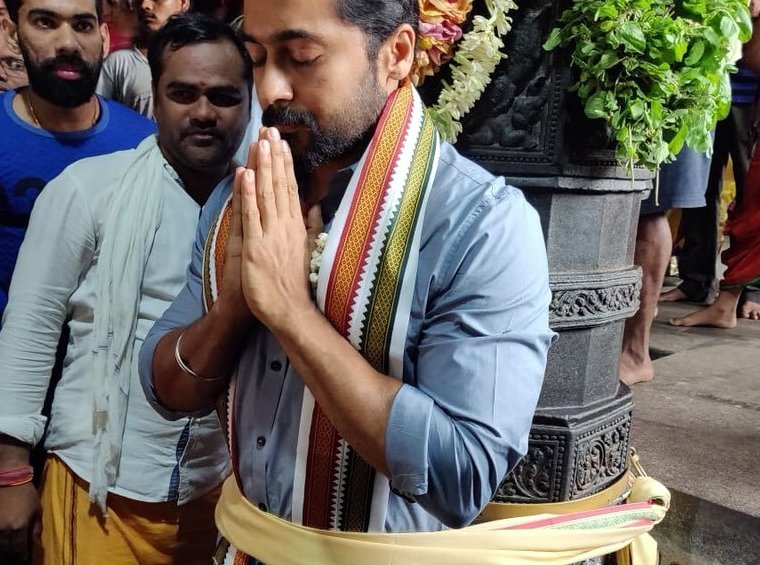
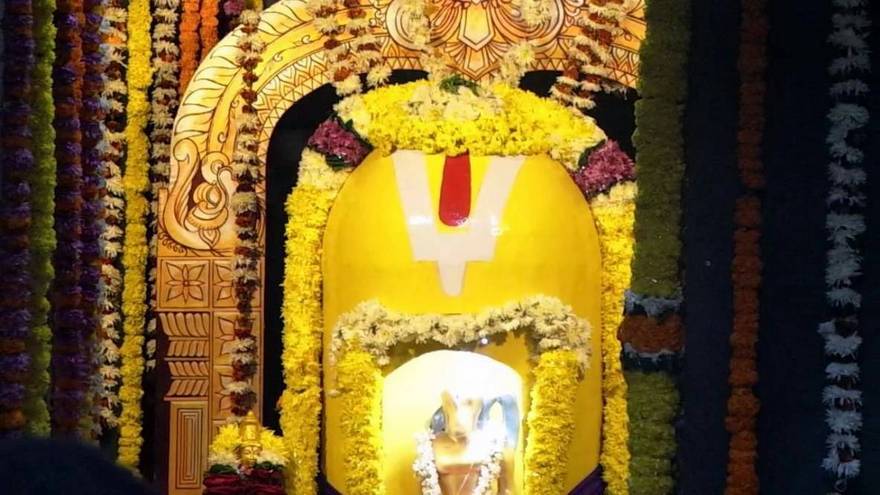

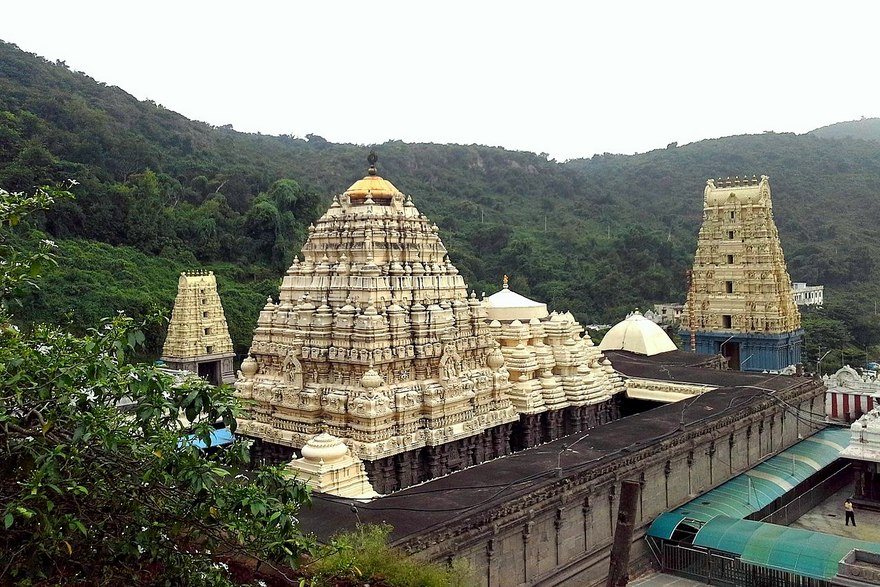
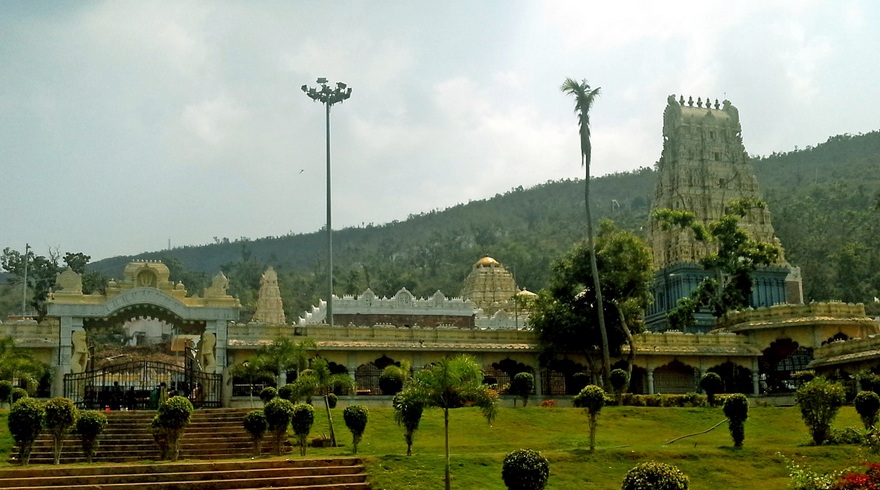
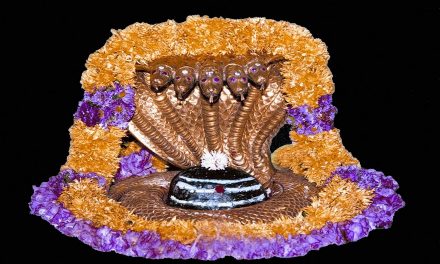










very excellant
We Wants to Dharshan as early.
it is an excellent description.This gives us details of our Hindu culture and deities
P.K.Khanna.
Very very nice write-up.
We want to dharshan this temple by God’s grace as early as possible
I found the article full of devotional fervor besides leaving a solid stamp on authentic facts of development of the shrine.There is much similarity in respect of rituals followed in the temple with that of Jagannath temple at Puri, Odisha. Arrangement of the deities, ornaments adorned, sculpture and over devotional atmosphere ruling scene mostly finger at the influence of Shankaracharya cult all way through.
Many many thanks for sharing the information on this place of worship.
Beautiful and very informative description about the temple.
Great .
An elaborate and informative article.It is appalling that Ramnujacharya converted a Shiva temple into a Vaishnava temple.How is it different from the activities of Christian and Islamic acts of proselytization?Is it not an example of intolerance? God was forced to bleed to retain his Linga shape.
very detailed even I do not have much knowledge which has so many details thank you.
Very exhaustive and interesting. Kudos to the writer.
AUM NAMO SRI LAKSHMI VARAHA NARSIMHAYA NAMH🙏
Very good explanation
Who did the most amount of damage to Siva within in India ? The Moguls or Shri Rananugan
very nice work. this info. is not available much. thanks for the useful information.
We had the opportunity to visit Simhachalam, but the detailed background we didn’t know during the visit. Thank you so much for the information.
Hinduism is a great religion. It is presented in varied forms throughout the country. The temple architecture was very rich in our country. We must be proud of our heritage and do everything necessary for its preservation. The first step is to support a government which works for Hinduism. Never vote for BJP which has been appeasing Muslims and Christians at the cost of Hindus. Vote for Ekam Sanatan Bharat Dal.
Excellent enlightenment of the superb cultural & religion era.
Good synopsis of a voluminous epic.
A very detailed and informative write up. One of the ancient temples of the South
and this is sure to make many of us to visit and have Darshan of the Varaha Narasimha
Murthy. Godd bless us and thanks for the particulars and sanctity of this Kshetra.
Visited the temple. Priest did Puja for us. Embraced pillow in main hall.
very interesting purana. om namo varaaha naarasimha
I’m glad to read this article and found the coverage about the Narasimha Swamy Temple at Simhachalam to be excellent. It’s indeed fascinating to learn about the various facts and clear explanations provided. The presence of the footprints of Hindu saint Chaitanya Mahaprabhu, installed by Bhaktisiddhanta Sarasvati in 1930 near the entrance, adds another layer of historical and spiritual significance to the temple. If you have any more questions or if there’s anything else you’d like to know about, feel free to ask!
Wish to visit in near future
absolutely one of the best articles about Simhachalam, our ancestors have provided us wealth of knowledge about how they lived the Sanatana way.
Amazing.
BEAUTIFULPHOTOS.WITH.FINE.EXPLANARION.
I made a Darshan of Lord throughout while reading this sacred article.
My Pranaam to the writer.
its excellent information for todays generation
The article refers to a “Hindu trinity.” Westerners incorrectly labeled Brahma, Vishnu, and Shiva as a “Hindu trinity” which is misleading as they’re not vishnu-tattva expansions. Jagganath, Baladeva, and Subhadra could, more accurately, be called a trinity. The doctrine of vishnu-tattva expansions: God expanding Himself into multiple Supreme Beings yet still remaining one is foreign to the rigid monotheism of Judaism and Islam (in which God is a singular Being who has no equal), but familiar to trinitarian Christianity. Muslims also regard the Catholic veneration of saints as idolatry and polytheism, and on the altars of Krishna temples, you see images of Bhaktivinoda Thakura, Bhaktisiddhanta Sarasvati Thakur, the Six Goswamis, etc. “Saints of the order” is how Indologist Dr. A.L. Basham described it.
Excellent
V.S.G.Chandra Sekhar on April 28, 2019 at 7:52 am
An elaborate and informative article.It is appalling that Ramnujacharya converted a Shiva temple into a Vaishnava temple.How is it different from the activities of Christian and Islamic acts of proselytization?Is it not an example of intolerance? God was forced to bleed to retain his Linga shape.
My reply: 1. If one looks at the photographs, most of the sculptures are of Narisimha and Varaha. Yes, there is a prominent one of Bhairava. But then it is not unusual for vaishvanaite temples to have Shiva Lingam as in Rameshwaram, TN.
Let’s not quibble over things very easily, and potentially cause divisions among the bakthas. Hinduism has enough trouble from external sources as it is. // In the Ramayana, Sri Ram does pray or pay homage to Mahadev more than one time!
‘The presence of the footprints of Hindu saint Chaitanya Mahaprabhu, installed by Bhaktisiddhanta Sarasvati in 1930 near the entrance, adds another layer of historical and spiritual significance to the temple.” This is certainly true. However, no bonafide student of Vaishnavism accepts Sri Caitanya Mahaprabhu as just a “Hindu saint”. He is the combined form of the Supreme Personality of Godhead, Sri Sri Radha and Krishna. He brought the chanting of His Holy Names from Goloka Vrindaban and spread Them throughout the world by His representative His Divine Grace Srila AC Bhaktivedanta Swami Srila Prabhupada. The Sri Caitanya Caritamrta by Srila Krishna das Kaviraja describes the Lord’s transcendental Lilas and philosophy and invites the conditioned souls to develop pure Krishna prema, capture Sri Krishna with this love, and return home, back to Godhead.
So beautiful temples, landscapes and wonderful story.
In the infiniry of the planets and stars of the universe, how many other incarnations of Lord Vishnu can we imagine?.
Thanks for this article
Good Evening,
Good Article, well written.
Hiranyaksha’s actual death wishes,
He should be killed neither day nor night. (killed as the sun was setting)
Neither any weapon nor animal. (Killed by the half-man half-lion incarnation of Vishnu, with claws)
Neither on earth nor in the sky. (Killed on Lords lap)
Neither indoors nor outdoors. (Killed on the palace threshold)
Only for iformation and sharing knowledge.
Regards
Uma
Excellent article. Thank you